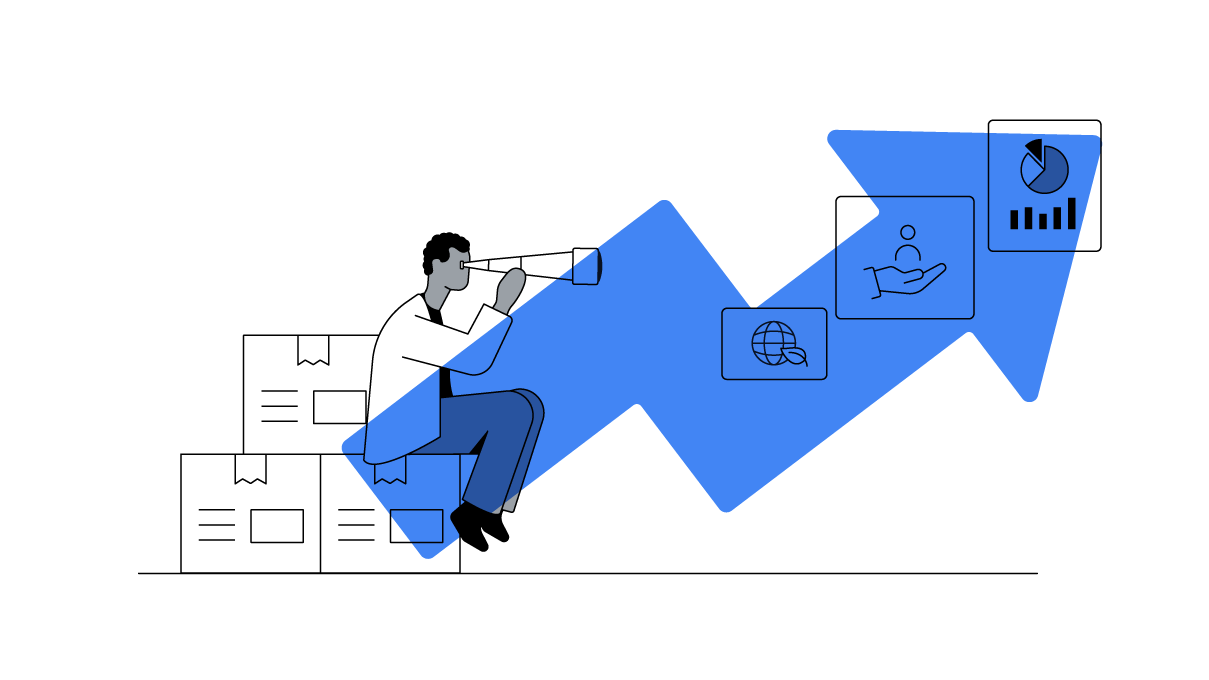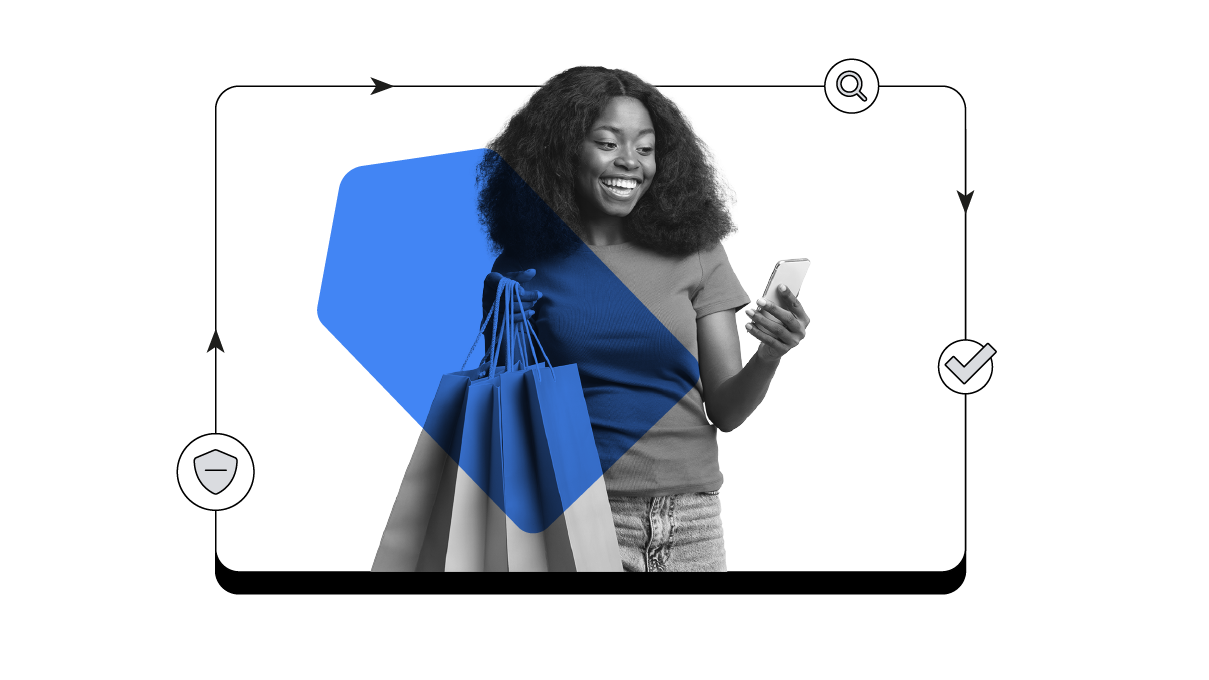When looking around your local high street it might be hard to imagine that, until recently, it wasn’t possible to walk into most stores without having to make an appointment, queue outside, or grab a face mask. But underneath the surface, there are still plenty of signs that suggest the retail landscape has changed forever.
Many local retailers are grappling with staff shortages, making it harder for them to provide customers with the same in-store experiences they offered before COVID hit. At the same time, people have gotten more used to online shopping — and even though the majority of people still intend to make purchases in-store, the gap between online and offline is smaller than ever.
Now that the retail world is slowly stabilising from the shock of 2020, it’s becoming clear that, to some degree, many of the consumer behaviours triggered by the pandemic are here to stay. So what can retailers do to help people shop when they want, how they want, and where they want? We delved into Google’s annual Smart Shopper study1 to unearth five key trends in retail across the Nordics and Benelux, and paired them with actionable retail tips.
1. The online shopping surge continues
The narrowing gap between online and offline is perhaps the biggest retail shift we’ve seen in the last 18 months. People that weren't previously engaging in ecommerce as much have now incorporated it into their daily lives. And retailers around the world have accelerated their digital transformations in order to keep up with rising online shopping trends.
Smart Shopper results confirmed this, with more people indicating they made their last purchase online this year than in 2019. The biggest shifts are seen in categories that had a lower online presence before COVID, including Home & Garden, Fashion, and Toys. The category showing least online growth is Consumer Electronics, likely because they are products consumers were already buying online.
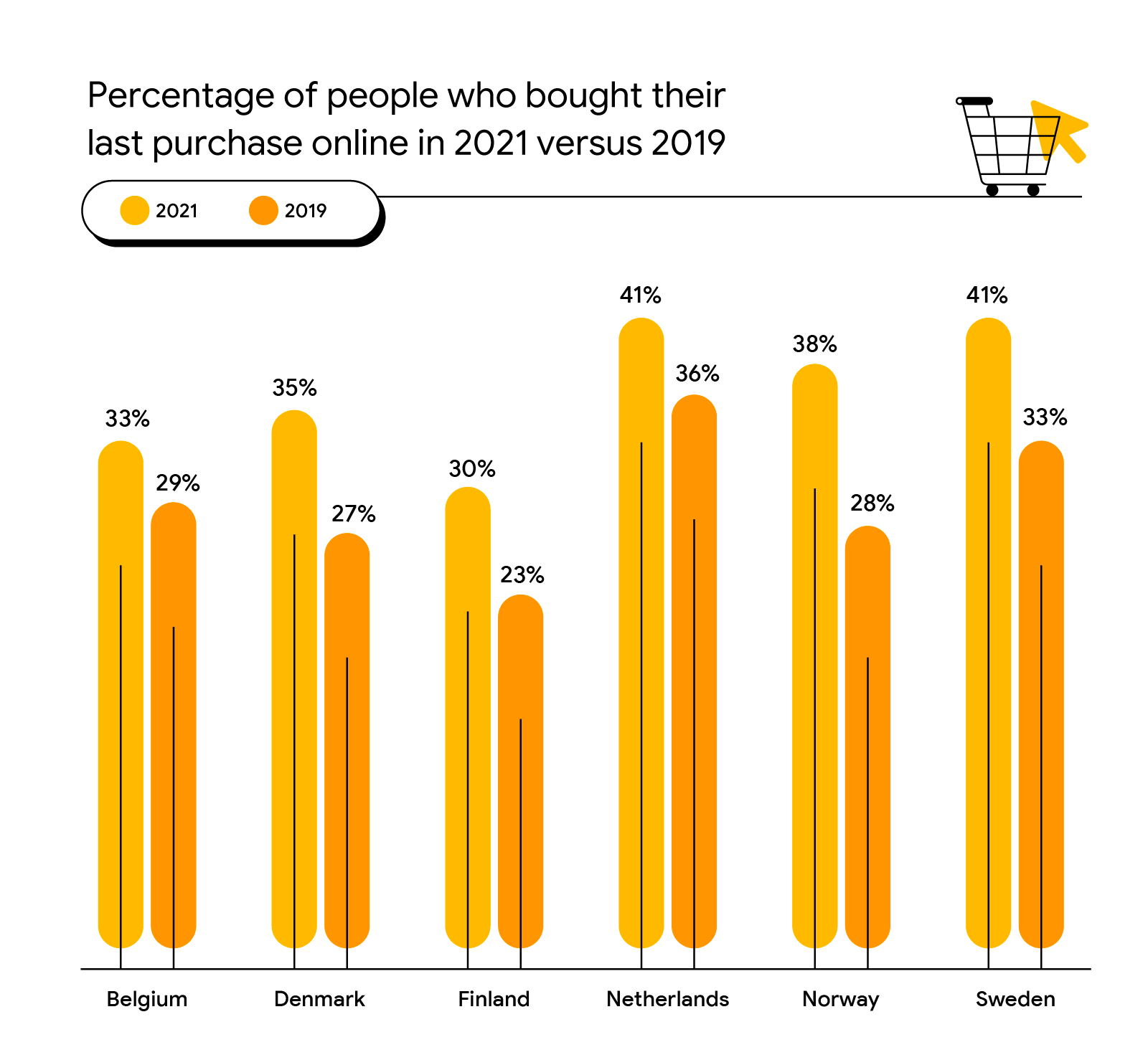
Retail tip: Ensure your online and offline channels complement each other. Just like your offline media can drive online traffic, so too can online ads encourage people to visit your physical stores. Not to mention services like Click & Collect, where customers can order online but pick up the product in-store. Treating all channels as one will allow you to reach customers wherever they are.
2. Retail apps are driving mobile conversions
The rise of retail apps, mobile payment options, and unlimited data plans have made mobile shopping more convenient than ever. This is evident from the amount of purchases people in lockdown made on their mobile devices instead of desktop or laptop. Where in the past, shoppers may have browsed products on their phone only to switch to a computer to make the actual purchase, improved app designs reduce the need to take this extra step.
In 2019, people across the Nordics and Benelux made an average of 32% of their online purchases on a mobile phone. This number rose to 45% during the pandemic, and hasn’t gone down since. A similar trend can be seen for mobile product research: 53% in 2019 versus 60% in 2021.
Retail tip: Prioritise your retail app design. Listen to your customers and analyse mobile user behaviour to find out which advanced features are worth investing in.
3. When considering new brands, convenience and quality are key
Online stock shortages meant that many people had to try out new brands during lockdown — so much so that ‘availability’ was the number one reason for people to consider new brands in 2020, closely followed by ‘price’. While both of these factors are still present today, ‘availability’ has significantly decreased in importance, and ‘quality’ and ‘delivery speed’ has risen sharply. Other reasons that showed an increase are ‘convenience’ and ‘brand recommendations’.

Retail tip: Help existing and potential customers make purchasing decisions by including the right information in your ad copy and product descriptions. Call out delivery options, expert recommendations, and customer reviews to ensure you address the points people are most likely to pay attention to.
4. More pain points, online and offline
42% of people in the Nordics and Benelux that shopped online this year experienced pain points, as opposed to 31.5% and 26.5% in 2020 and 2019 respectively (Sweden and the Netherlands only). The main online pain points include ‘not being able to make a purchase without registration or log-in’, ‘product unavailable’, and ‘product reviews hard to find’. From the offline pain points it becomes clear that in-store experiences were impacted by staff shortages across the region: ‘long queues’, ‘no consultancy in store’, and ‘couldn’t find the product’ were mentioned most frequently in the survey.
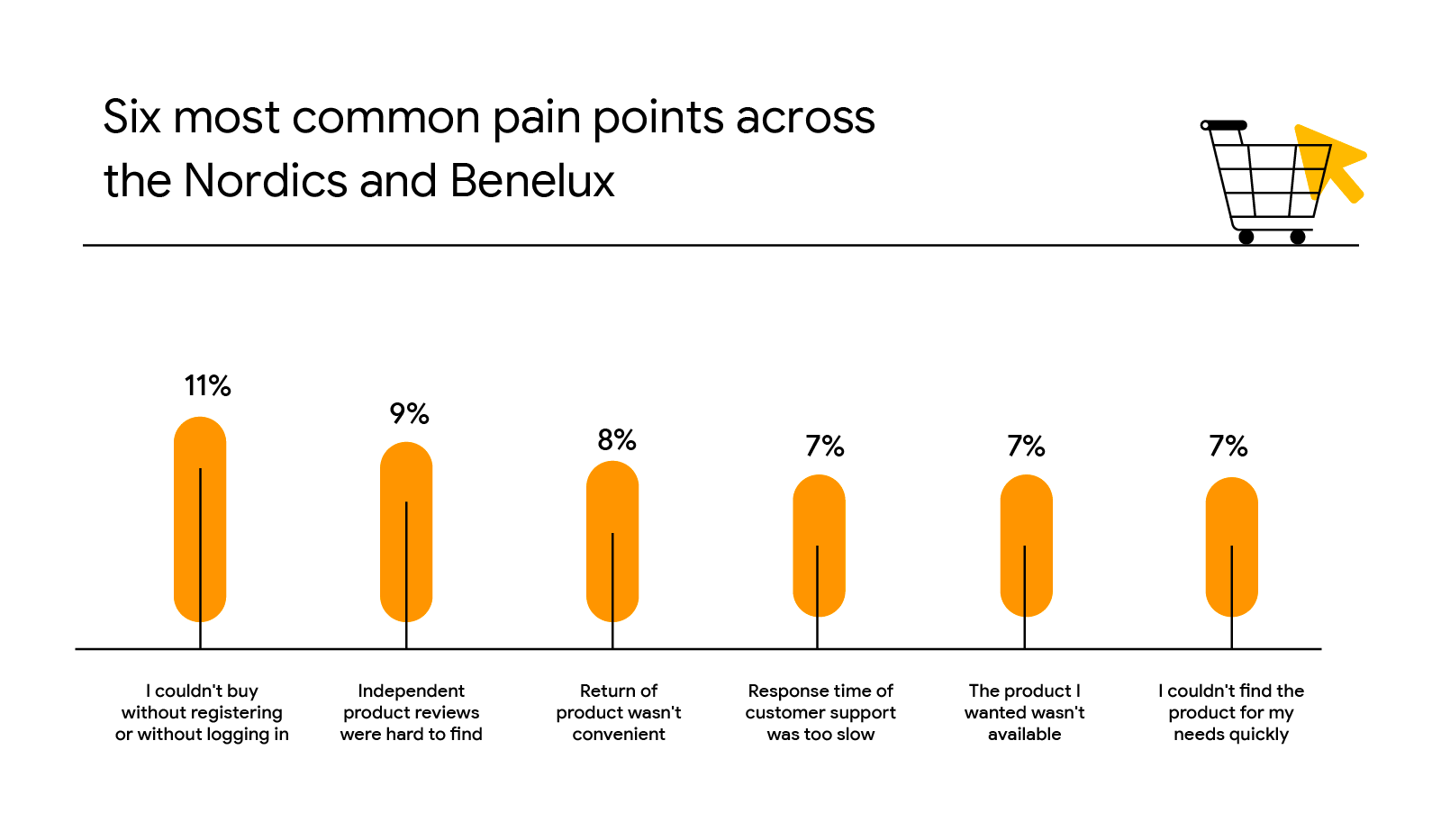
Retail tip: Run customer surveys, invest in customer service and chatbots, and check comments on your social channels to identify the pain points your customers are experiencing. Then work with your UX and store management teams to address them.
5.Sustainability is on people’s minds
During lockdown, many people were encouraged to stop living life on autopilot and think more consciously about their decisions. This is reflected in the growing share of people saying they take at least one of the below criteria into account when making a purchase. For example, in both Sweden and the Netherlands, this number grew by 8% this year (from 47% and 55% to 65% and 62% respectively).
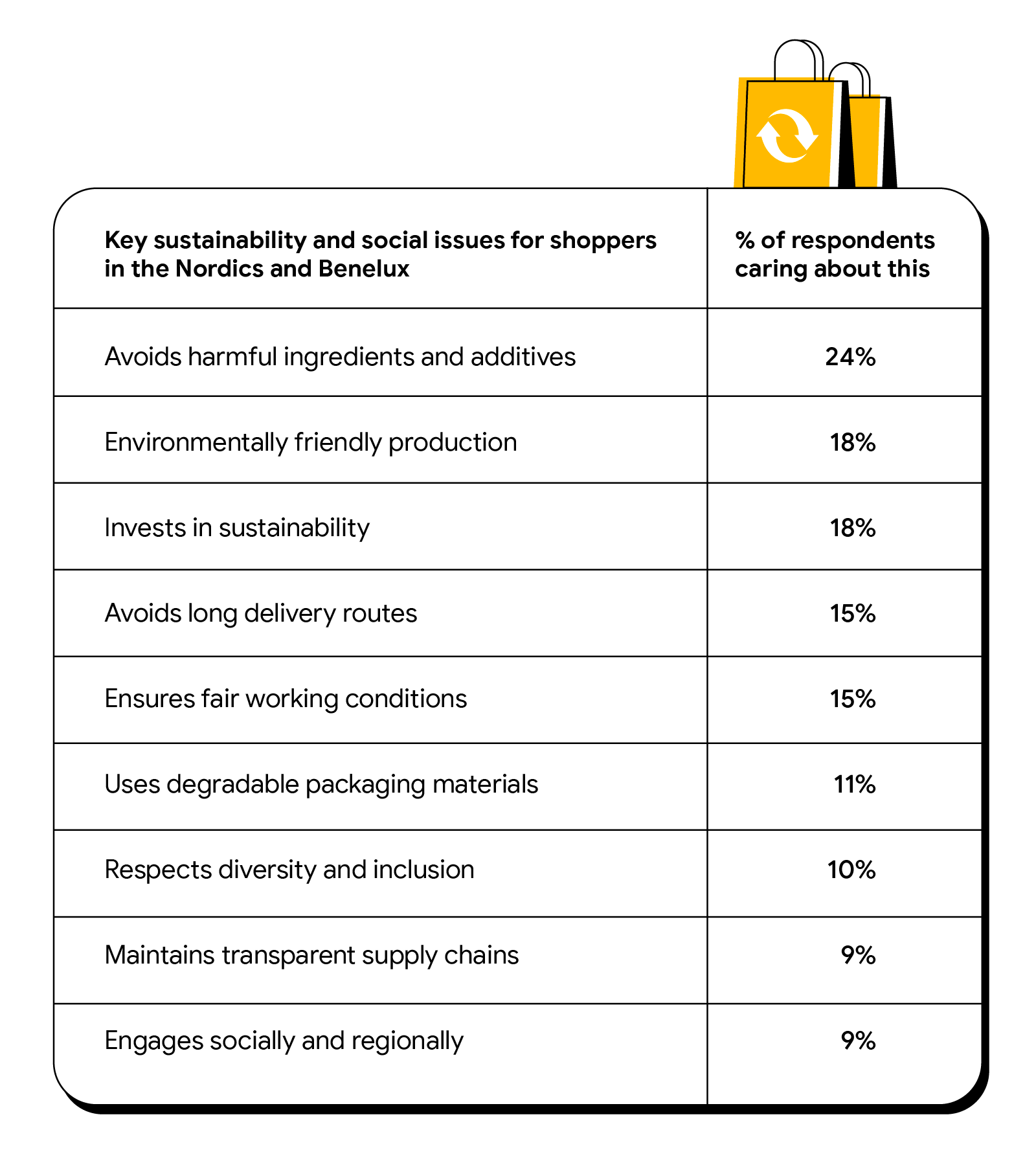
Retail tip: Put customer values at the heart of your marketing. Consumers expect brands to take a stance on sustainability and social issues; clearly communicating and visibly living up to your values will help build a deeper connection with your audience.
